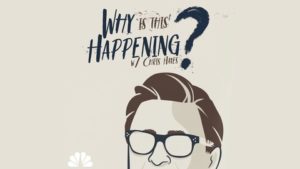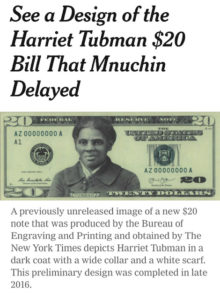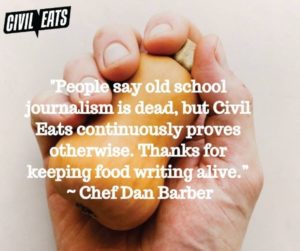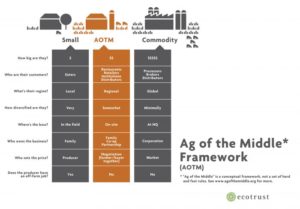♡
June 27, 2019Cat.
“Unless good people stand up to be heard then fear and cruelty will always dominate the world. So it’s time for those people to stand up and lift their heads.”
Political possibility.
As I prepare for tonight’s debate, I am thinking about why I got into this race. I’m committed to articulating as strongly as I can my beliefs on which this campaign stands.
I believe we won’t be the country that we can be, until we’re the people that we can be. Too many people are held back from being all they can be, due to bad public policy that does more to limit their dreams than to unleash their spirits.
I believe government can and should be a force for good. It should create and secure opportunities for people to embrace the light, thus making it less probable they will fall into darkness.
America has now fallen into a dark night of the American soul. We’re living at a time when some of the worst human impulses have been turned into a political force. And that will be transcended only by the best human impulses turned into a political force.
That is why I take a stand for love.
I take a stand for economic and social justice. I take a stand for America’s children. I take a stand for safety. I take a stand for our planet. I take a stand for racial reconciliation. And I take a stand for peace.
I will continue to do that, tonight in Miami, tomorrow in Homestead, and the day after that in Iowa. I will continue to campaign on the possibility that America can emerge from this time and be better than we have ever been.
Necessarily indelible.
“The power in this image speaks to the current reality in the U.S. and around the world of the plight of immigrants,” said the Rev. Kenny Irby, an independent visual consultant with more than 40 years of experience in journalism and education. “It’s an authentic truth that needs to be part of the narrative.” -NPR/Emily Bogle
‘Óscar Alberto Martínez Ramírez, frustrated because the family from El Salvador was unable to present themselves to U.S. authorities and request asylum, swam across the river on Sunday with his daughter, Valeria.
He set her on the U.S. bank of the river in Brownsville, Texas, and started back for his wife in Matamoros, Mexico. But seeing him move away, the girl threw herself into the waters. Martínez returned and was able to grab Valeria, but the current swept them both away.’
Tragically, necessarily, indelible.
In memoriam. Óscar Alberto Martínez Ramírez and Valeria.
♡
‘Your sweet memory comes on the evening wind
I sleep and dream of holding you in my arms again
The lights of Brownsville, across the river shine
A shout rings out and into the silty red river I dive
Meet me on the Matamoros
Meet me on the Matamoros
Meet me on the Matamoros banks’
~
by Kelly McBride/Ethics & Trust
The shocking image joins a small portfolio of iconic photographs that magnify the suffering of children caught in geopolitical chaos, including Kevin Carter’s 1993 picture of a starving Sudanese child collapsed outside a feeding center during a widespread famine, Nick Ut’s 1972 picture of a naked girl burned by napalm in Vietnam, and Nilufer Demir’s 2015 picture of 4-year-old Syrian refugee Alan Kurdi washed ashore in Turkey.
These photographs have the power to galvanize the public, much the way that David Jackson’s picture of Emmett Till’s open casket did in 1955.
No matter what your political views on immigration are, the fact that so many children are suffering because of decisions made by the U.S. government is something every American should take note of.
NPR
The Story Behind That Photo Of A Father And Daughter On The Banks Of The Rio Grande
‘NPR’s Ari Shapiro speaks with Associated Press reporter Christopher Sherman about the Salvadoran family who lost their lives trying to cross the Rio Grande.’
Shoes & Practice
June 25, 2019‘The Golden Rule is so basic, so logical, so easy to agree with, yet so utterly difficult to practice! One way to start is to simply put ourselves in the other’s shoes, to practice empathy and sympathy. Practice is really the operative word, for empathy does require practice. It takes many intentional efforts before we can make it a habit.’
Day by Day with St. Francis, by Peter A. Giersch [2015]
~
If we just keep hold of each other, you grasping the young one and I the old, we could revolve together like ´*.¸.• .¸. ¸.☆¨ .¸.¸¸.☆’s.
New Poems, by Rainer Maria Rilke
Noam.
June 23, 2019“We have two choices. We can be pessimistic, give up and help ensure that the worst will happen. Or we can be optimistic, grasp the opportunities that surely exist and maybe help make the world a better place.”
-Noam Chomsky
´*.¸.• .¸. ❥❥¸¸.☆¨¯ Wind & Sun.¸.¸¸.☆¨¯`❥❥
June 21, 2019Trees are all clothed and benches are out, and a new summer has begun.
-Thomas Merton
‘The energy is feminine.’
June 20, 2019This solstice supports family, home, nurturing, and taking care of your container, your body and your self care. The energy is feminine, creative, fertile and supportive to collaboration, honoring of Mother Earth and Mother figures, and feeding the seeds that you are planting for new projects and ideas. We are focused on honoring the sun as well, taking in the energy of that life force and filling ourselves up with it.
Beware of the emotional edge that can either challenge or support you during this time. Think before you speak and act and always consider others. When in doubt, come from a place of kindness and compassion.
-Power Path
´*.¸.• .¸. ❥❥¸¸.☆¨¯ .¸.¸¸.☆¨¯`❥❥
The Solstice is Friday, June 21st, at 9:54 AM Mountain Daylight Time [MDT].
“We have to cool the planet.”
David Wallace-Wells, Author of the book, The Uninhabitable Earth/Life After Warming [‘The most terrifying book I have ever read.’ -Farhad Manjoo, The New York Times]
“It’s become fashionable to call for a WWII-style climate mobilization. But virtually no one will call for activities the U.S. actually undertook then—rationing food and fuels, seizing property, nationalizing factories or industries, suspending liberties.”
David Wallace-Wells
https://issues.org/the-empty-radicalism-of-the-climate-apocalypse/
Himalayan glacier melting doubled since 2000, spy satellites show
Ice losses indicate ‘devastating’ future for region and 1 billion people who depend on it for water
The Guardian
The analysis shows that 8bn tonnes of ice are being lost every year and not replaced by snow, with the lower level glaciers shrinking in height by 5 meters annually. The study shows that only global heating caused by human activities can explain the heavy melting. In previous work, local weather and the impact of air pollution had complicated the picture.
Joshua Maurer, from Columbia University’s Lamont-Doherty Earth observatory, who led the new research, said: “This is the clearest picture yet of how fast Himalayan glaciers are melting since 1975, and why.” The research is published in the journal Science Advances.
[…]
The spy satellite photographs used in the research had lain unused in archives for some years. But a computer tool developed by Maurer and colleagues enabled these 1970s photos to be turned into 3D maps.
Schaefer said: “For the wellbeing of the people there, our results are of course the worst possible. But it is what it is, and now we have to prepare for that scenario. We have to worry a lot, because so many people are affected.
“To stop the temperature rises, we have to cool the planet,” he said. “We have to not only slow down greenhouse gas emissions, we have to reverse them. That is the challenge for the next 20 years.”
“Is it too late for us? Scientists have spent decades sounding the alarm on the devastating effects of climate change. And for decades, society decided to do pretty much nothing about it. In fact, over the past 30 years, we’ve done more damage to the climate than in all of human history! Now, there’s a real chance we may have waited too long to avoid widespread tragedy and suffering. In his book “The Uninhabitable Earth”, David Wallace-Wells depicts a catastrophic future far worse than we ever imagined…and far sooner than we thought. It is undoubtedly a brutal truth to face, as you will hear in this episode, but if there’s any hope to avert the worst case scenarios, we have to start now.”
[First aired in March 2019]
https://www.stitcher.com/podcast/msnbc/why-is-this-happening/e/59220213
Collective Feminine Wisdom
June 18, 2019Wise Women
Friday, June 14, 2019
‘As you have undoubtedly noticed, the feminine is rising at last, overflowing the banks of every landscape, from politics to religion, from the world of entertainment to the fields of peace and justice. She is unconditionally loving, and she is deliciously irreverent. She is shifting the global paradigm from one of dominance and individualized salvation to one of collective awakening and service to all beings.
Her wisdom has been hidden in the heart of each of the great spiritual traditions: Hinduism, Buddhism, Taoism, Judaism, Christianity, Islam, and all Indigenous wisdom ways. Access to these jewels has required excavation, but the treasures that have emerged are transfiguring the soul of the world, offering medicine for the broken heart of humanity and the materials needed to mend the torn fabric of the earth.
Ever since I was a young girl, I have been irresistibly drawn to every religion I encountered. Born into a non-religious Jewish family, I had embraced multiple spiritual traditions by the time I was twenty and integrated them into my daily life: a deep devotion to an Indian saint, a daily Buddhist meditation practice, initiation into multiple Sufi lineages, a reclamation of the ancient beauty of my ancestral home in Judaism, and an unexpected friendship with Christ through the mystics, whose words I have since translated. Each of these paths has comingled in my being, creating a rich and robust spiritual soil.
It is the Christian women mystics who have become my most cherished spiritual sisters and role models. The sixteenth-century Spanish mystic, Teresa of Ávila [1515–1582] has shown me what it looks like to cultivate ecstatic intimacy with God in the center of my own being and also find my Beloved “living among the pots and pans.” The medieval Rhineland visionary Hildegard of Bingen [1098–1179] praises God’s greening energy in every particle of creation, helping me to glimpse the face of the One in all that is. The English anchoress Julian of Norwich [1342–1316] had a near death experience in which Christ revealed himself as an unconditionally loving Mother who continuously breaks herself open and pours herself out to her children, endlessly forgiving and enthusiastically adoring us.
Through each of these wise women, I have come to recognize the holiness of incarnation. There is nothing in this gorgeous, messy world, not a thing in my own imperfect perfection, no place in the scope of the human predicament or the majesty of the natural world that is not, by its very nature, blessed: the chosen dwelling place of the One we love. [1]
Our experiences of embodiment may not always correspond with idealized images of holiness, but these preconceptions derive from masculine standards of perfection. Such paradigms have caused great harm, and they are no longer valid. I invite you to abandon your efforts to fix yourself and instead reclaim your innate beauty and worth as a luminous cell in the body of Mother Earth.’ [2]
[1] Mirabai Starr, “Indwelling and Outflowing,” the Mendican, vol. 9, no. 2 (Center for Action and Contemplation: 2019), 3.
[2] Mirabai Starr, Wild Mercy: Living the Fierce and Tender Wisdom of the Women Mystics (Sounds True: 2019), 154.
So, what’s a filibuster?
VOX
‘A handful of 2020 Democrats support eliminating the Senate filibuster, a rule that lets a minority of lawmakers block any bill from coming up for a vote on the floor. Vox reporter Alvin Chang explains what the filibuster does, where it came from, and why there’s a growing movement to scrap it.’ [5:57]
Sally Ride & the ‘Lazy Media’
The only bad moments in our training involved the press… Whereas NASA appeared to be very enlightened about flying women astronauts, the press didn’t appear to be. The things that they were concerned with were not the same things that I was concerned with… Everybody wanted to know what kind of makeup I was taking up — they didn’t care about how well-prepared I was to operate the arm or deploy communication satellites… The worst question that I’ve gotten was whether I cried when we got malfunctions in the simulator. -Sally Ride
Maria Popova:
“In 1978, while studying for her Ph.D. in physics, Sally Ride (May 26, 1951–July 23, 2012) answered a newspaper ad from NASA. On June 18, 1983, she soared into the cosmos aboard the Space Shuttle Challengerand became the first American woman in space, the country’s youngest astronaut in orbit, and the world’s first lesbian astronaut to launch into the cosmos. “We’ve come a long way,” she declared.
But lurking in the shadow of every major leap toward equality is also a reminder of how far we have yet to go. Shortly after returning to Earth from orbit, Ride sat down with trailblazing feminist Gloria Steinem — a woman who has dedicated her life to the art of public listening — for a conversation about gender in science, how the options our culture makes available to us limit the dreams we’re capable of dreaming, how lazy journalism perpetuates stereotypes, and the future of space exploration.”
brain pickings.org
Juneteenth/40 Acres
June 17, 2019“Juneteenth is the oldest nationally celebrated commemoration of the ending of slavery in the United States.
From its Galveston, Texas origin in 1865, the observance of June 19th as the African American Emancipation Day has spread across the United States and beyond.
Today Juneteenth commemorates African American freedom and emphasizes education and achievement. It is a day, a week, and in some areas a month marked with celebrations, guest speakers, picnics and family gatherings. It is a time for reflection and rejoicing. It is a time for assessment, self-improvement and for planning the future. Its growing popularity signifies a level of maturity and dignity in America long over due. In cities across the country, people of all races, nationalities and religions are joining hands to truthfully acknowledge a period in our history that shaped and continues to influence our society today. Sensitized to the conditions and experiences of others, only then can we make significant and lasting improvements in our society.” [juneteenth.com]
~
Eviction isn’t without its own historical context. In vulnerable communities of people of color, in particular, displacement and denial of housing are phenomena centuries in the making. This episode maps the persistent line between racist housing policies, localized profiteering, and the devastating plunder of generations of wealth.
On the Media
From June 14th:
‘We continue our four-part series on eviction by charting the persistent line between racist housing policies, localized profiteering and the devastating plunder of generations of wealth. Guests include Matt Desmond [@just_shelter], founder of the Eviction Lab; Natalie Moore, reporter for WBEZ; and Marty Wegbreit, director of litigation for the Central Virginia Legal Aid Society.’
https://www.wnycstudios.org/story/on-the-media-40-acres
From June 7th:
‘Millions of rent-burdened Americans face eviction filings and proceedings every year. On this week’s On the Media, what we think we know, and what we definitely don’t know, about America’s eviction crisis.
We hear the story of Jeffrey, a security guard in Richmond, Virginia whose severe rent burden caused his family to be evicted.
Matthew Desmond, founder of the Eviction Lab, explains what he and his fellow researchers have learned from their massive collection of eviction data.’
https://www.wnycstudios.org/story/introducing-the-scarlet-e-the-media
To discover eviction rates in your area visit:
https://www.wnycstudios.org/shows/otm/scarlet-e-unmasking-americas-eviction-crisis
Evictions are filed over 3.7 million times a year in America — or at a rate of one every seven seconds. The eviction epidemic has bedeviled more lives than the opioid crisis and still its causes — and consequences — remain largely ignored or misunderstood.
With the help of Matt Desmond and the Eviction Lab, which has compiled the largest-ever database of eviction records, our series charts a course through a thicket of contradictions and assumptions to reveal the heart of the crisis.
You can take your own first step on this course by witnessing the data from your own state, in comparison with two states that we visited in our reporting.
“Evicted stands among the very best of the social justice books.” —Ann Patchett, author of Bel Canto and Commonwealth
‘In Evicted, Princeton sociologist and MacArthur “Genius” Matthew Desmond follows eight families in Milwaukee as they each struggle to keep a roof over their heads. Hailed as “wrenching and revelatory” (The Nation), “vivid and unsettling” (New York Review of Books), Evicted transforms our understanding of poverty and economic exploitation while providing fresh ideas for solving one of twenty-first-century America’s most devastating problems. Its unforgettable scenes of hope and loss remind us of the centrality of home, without which nothing else is possible.’ [Amazon]
For expanded investigative reporting on redlining, visit:
https://www.revealnews.org/tag/redlining/
‘We engage and empower the public through investigative journalism and groundbreaking storytelling that sparks action, improves lives and protects our democracy.
Founded in 1977 as the nation’s first nonprofit investigative journalism organization, The Center for Investigative Reporting has developed a reputation for being among the most innovative, credible and relevant media organizations in the country.
Reveal – our website, public radio program, podcast and social media platform – is where we publish our multiplatform work.’
The New Yorker
June 2019
Ta-Nehisi Coates Revisits the Case for Reparations
It’s not often that an article comes along that changes the world, but that’s exactly what happened with Ta-Nehisi Coates, five years ago, when he wrote “The Case for Reparations,” in The Atlantic. Reparations have been discussed since the end of the Civil War—in fact, there is a bill about reparations that’s been sitting in Congress for thirty years—but now reparations for slavery and legalized discrimination are a subject of major discussion among the Democratic Presidential candidates. In a conversation recorded for The New Yorker Radio Hour, David Remnick spoke with Coates, who this month published “Conduction,” a story in The New Yorker’s Fiction Issue. Subjects of the conversation included what forms reparations might take, which Democratic candidates seem most serious about the topic, and how the issue looks in 2019, a political moment very different from when “The Case for Reparations” was written.
God is in the roses.
June 15, 2019God is in the roses
The petals and the thorns
Storms out on the oceans
The souls who will be born
And every drop of rain that falls
Falls for those who mourn
God is in the roses
And the thorns. -Rosanne Cash
❧
“Vulnerability transforms you. You can’t be in the presence of a truly vulnerable, honestly vulnerable person and not be affected. I think that’s the way we are meant to be in the presence of one another.” [Richard Rohr]
The cross was not a transactional moment, but deeper, ensconced in humility and vulnerability. [Reference to Richard Rohr]
“As he draws near Jerusalem, Jesus weeps out of a sadness and frustration at people’s blindness to what is right in front of them…oblivious.” [Forward Day by Day]
“The Talmud says that unhappy conditions arise when we mistake shadower substance. We are ever renewed by the presence of that which cannot change. We are ever renewed by the passage of the Divine light through our consciousness. Silently, I pass from less to more, from isolation to inclusion, from separation into oneness.” [Ernest Holmes]
❧
“And this above all: that through these petals light must pass. From a thousand skies, each drop of darkness is filtered out and the glow at the core of each flower grows stronger and rises into life.
And the movement of the roses has a branch none could discern, were it for for what it ignites in the universe entire…
One could say they were self-contained if self-contained meant to transform the world outside, patience of springtime, guilt and restlessness, the secrecy of fate and the darkness of Earth at evening…on out to the streaming and fleeing of clouds and, farther yet, the orders of the stars…take it all and turn it into a handful of inwardness.”
See how it lies at ease in the open roses. -Rilke
#HarrietTubmanNow
June 14, 2019NYTIMES
WASHINGTON — Extensive work was well underway on a new $20 bill bearing the image of Harriet Tubman when Treasury Secretary Steven Mnuchin announced last month that the design of the note would be delayed for technical reasons by six years and might not include the former slave and abolitionist.
Many Americans were deeply disappointed with the delay of the bill, which was to be the first to bear the face of an African-American. The change would push completion of the imagery past DT’s time in office, even if he wins a second term, stirring speculation that Mr. Trump had intervened to keep his favorite president, Andrew Jackson, a fellow populist, on the front of the note.
But Mr. Mnuchin, testifying before Congress, said new security features under development made the 2020 design deadline set by the Obama administration impossible to meet, so he punted Tubman’s fate to a future Treasury secretary.
In fact, work on the new $20 note began before DT took office, and the basic design already on paper most likely could have satisfied the goal of unveiling a note bearing Tubman’s likeness on next year’s centennial of the 19th Amendment, which granted women the right to vote.
That preliminary design was completed in late 2016.
A spokeswoman for the bureau, Lydia Washington, confirmed that preliminary designs of the new note were created as part of research that was done after Jacob J. Lew, President Barack Obama’s final Treasury secretary, proposed the idea of a Tubman bill.
The development of the note did not stop there.
A current employee of the bureau, who asked not to be named because of the sensitivity of the matter, personally viewed a metal engraving plate and a digital image of a Tubman $20 bill while it was being reviewed by engravers and Secret Service officials as recently as May 2018. This person said that the design appeared to be far along in the process.
Within the bureau, this person said, there was a sense of excitement and pride about the new $20 note.
But the Treasury Department, which oversees the engraving bureau, decided that a new $20 bill would not be made public next year. Current and former department officials say Mr. Mnuchin chose the delay to avoid the possibility that Mr. Trump would cancel the plan outright and create even more controversy.
In an interview last week, Mr. Mnuchin denied that the reasons for the delay were anything but technical.
“Let me assure you, this speculation that we’ve slowed down the process is just not the case,” Mr. Mnuchin said, speaking on the sidelines of the G-20 finance ministers meeting in Japan.
The Treasury secretary reiterated that security features drive the change of the currency and rejected the notion that political interference was at play. He declined to say if he believed his predecessor had tried to politicize the currency.
Interagency, including the Secret Service and others and B.E.P., that are all career officials that are focused on this,” he said, referring to the Bureau of Engraving and Printing. “They’re working as fast as they can.”
Monica Crowley, a spokeswoman for Mr. Mnuchin, added that the release into circulation of the new $20 note remained on schedule with the bureau’s original timeline of 2030. She did not, however, say that the bill would feature Tubman.
“The scheduled release (printing) of the $20 bill is on a timetable consistent with the previous administration,” she said in a statement.
But building the security features of a new note before designing its images struck some as curious. Larry E. Rolufs, a former director of the Bureau of Engraving and Printing, said that because the security features of a new note are embedded in the imagery, they normally would be created simultaneously.
“It can be done at the same time,” said Mr. Rolufs, who led the bureau from 1995 to 1997. “You want to work them together.”
The process of developing American currency is painstaking, done by engravers who spend a decade training as apprentices. People familiar with the process say that engravers spend months working literally upside down and backward carving the portraits of historical figures into the steel plates that eventually help create cash. Often, multiple engravers will attempt different versions of the portraits, usually based on paintings or photographs, and ultimately, the Treasury secretary chooses which one will appear on a note.
Mr. Rolufs said that because of the complexity of creating new currency, circulating a new note design by next year was ambitious. He also acknowledged that making major changes to the money is an invitation for backlash.
“For the secretary to change the design of the notes takes political courage,” he said. “The American people don’t like their currency messed with.”
As a presidential candidate, Mr. Trump called the decision to replace Jackson, who was a slave owner, with Tubman “pure political correctness.” An overhaul of the Treasury Department’s website after Mr. Trump took office removed any trace of the Obama administration’s plans to change the currency, signaling that the plan might be halted.
Within Mr. Trump’s Treasury Department, some officials complained that Mr. Lew had politicized the currency with the plan and that the process of selecting Tubman, which included an online poll among other forms of feedback, was not rigorous or reflective of the country’s desires.
The uncertainty has renewed interest in the matter. This week, Gov. Larry Hogan of Maryland, where Tubman was born, wrote a letter to Mr. Mnuchin urging him to find a way to speed up the process.
“I hope that you’ll reconsider your decision and instead join our efforts to promptly memorialize Tubman’s life and many achievements,” wrote Mr. Hogan, a Republican.
And last week, a group of House Democrats demanded that the Treasury secretary provide specific information about the security concerns that were impeding the currency redesign.
At the Bureau of Engraving and Printing, which offers tours and an exhibit on the history of the currency, some visitors said they preferred tradition, while others were seeking change.
“For me, it’s not important enough to spend the money to change it,” said Jeff Dunyon, who was visiting Washington from Utah this week. “There are other ways to honor her.”
Charnay Gima, a tourist from Hawaii, had just finished a tour when she pulled aside a guide to ask a question that was bothering her. She wanted to know what became of the plan to make Tubman the face of the $20 bill.
To Ms. Gima’s dismay, there was no sign of Tubman in any of the bureau’s exhibits. The plan was scrapped, she was told, for political reasons.
“It’s kind of sad,” said Ms. Gima, who is black. “I was really looking forward to it because it was finally someone of color on the bill who paved the way for other people.”
The world will always be broken.
“Hard, awful things happen in this broken world. Nothing we can do will change that fact. Bad things happen, and they will happen to good people we love, or to us.” [Forward Day by Day]
“Those who love us will miss us.” -Keanu Reeves
“Identification with suffering might just be non-dual thinking in its most active and proactive form and why nonviolence demands such a high level of transformation. Our resistance to suffering is an entire industry now, perhaps symbolized by the total power of the gun lobby and the permanent war economy in America, the fear of any profit sharing with the poor, or the need to be constantly entertained. Maybe that is why some have said that the foundational virtue underlying al others is courage (“cor-agere” = an action of the heart). It takes immense courage to walk in solidarity with the suffering of there’s, and even our own.” -Fr. Richard Rohr
As an inlet cannot close itself to the sea that shapes it, the heart can only wear itself open.
“One of the hardest blessings to accept about the heart is that in the image of life itself, it will not stop emerging through experience. No matter how we try to preserve or relieve what has already happened, the heart will not stop being shaped. It knows that the only way to truly remember or stay whole is to take the best and worst into its tissue.
Despite all our intentions not be hurt again, the heart keeps us going by moving us ever forward into health. Though we walk around thinking we can direct it, our heart is endlessly shaped like the land, often against our will.” -Mark Nepo
Civil Eats
How an Oregon Rancher is Building Soil Health—and a Robust Regional Food System
Fourth-generation rancher Cory Carman holistically manages 5,000-acres which serve as a model for sustainable meat operations in the Pacific Northwest.
Carman Ranch began as a few hundred acres Carman’s great-great-grandfather Jacob Weinhard—nephew to the legendary Northwest beer brewer Henry Weinhard—bought for his son Fritz in the early 1900s. Under Carman’s watch, the operation now spans 5,000 acres of grasslands, timbered rangeland, and irrigated valley ground nestled against the dramatic peaks of the Wallowa Mountains. Hawks, eagles, and wildlife greatly outnumber people in this isolated northeastern corner of the state, originally home to the Wal-lam-wat-kain (Wallowa) band of the Nez Perce tribe.
Distinct from most cattle operations in the U.S., Carman’s cattle are 100 percent grass-fed well as grass-finished. (The term “grass-fed” is not regulated, so it can mean that animals have only been briefly pastured before they’re sent to a factory feedlot to be finished.) The ranch primarily produces cattle and pigs, which it mostly markets to wholesale accounts, though it sells a lesser amount of meat as “cow shares”—or quarters of beef ranging from 120 to 180 pounds purchased directly by consumers.
Equally if not more important to Carman, however, is the focus on what she calls the “holistic management” of her land. This involves constantly moving the cattle and paying careful attention to the rate of growth of the animals and grasses. By this system, the steers select the forages they need to grow and gain weight, and the grasses get clipped, trampled down, and fertilized with manure, resulting in fields that are vibrant—they retain water, resist drought, contain abundant organic matter, which contributes nutrients and carbon, and are highly productive without the addition of fertilizer.
https://civileats.com/2019/01/31/how-an-oregon-rancher-is-building-soil-health-and-a-robust-regional-food-system/
Mid-Sized Farms Are Disappearing. This Program Could Reverse the Trend.
A new ‘Ag of the Middle’ program helps small producers scale up so that they can compete in a food system designed to benefit larger farms.
“If we don’t invest in beginning farmers and the advancement of our family farms, and if we don’t put checks on increasing consolidation in agriculture, we’re going to be at risk of losing the ag of the middle entirely,” said Juli Obudzinski, National Sustainable Agriculture Coalition Interim Policy Director, in a recent statement. “Seventy-five percent of all agricultural sales are now coming from just 5 percent of operations.”
Over the years, a number of experts have written books and formed think tanks to address agriculture’s shrinking middle, but as many of the men and women running the remaining mid-sized farms are looking toward retirement, the most important question may be how to best help farmers like the Menchinis grow to take their place.
The Ag of the Middle Accelerator Program from Portland-based nonprofit Ecotrust aims to do just that. The two-year program helps smaller farms, ranches, and fishermen grow to gross between $100,000 to $3 million. And it hopes to build a model that can be borrowed and reproduced all around the country.
Expanding The Shrinking Middle
While there are no hard and fast rules dictating farm size, mid-size operations tend to be regional, somewhat diverse operations that negotiate prices with their customers in restaurant, retail, or at institutions, while large farms are typically less diverse, operate globally, and make millions selling to processors, brokers, or distributors for a price that is set by the market.
https://civileats.com/2019/06/11/mid-sized-farms-are-disappearing-this-program-could-reverse-the-trend/
Collective failure.
June 10, 2019‘Florence will be yours, and Pisa’s cathedral, Moscow with bells like memories, and the Troika convent, and the monastery whose maze of tunnels lies swallowed under Kiev’s gardens.’
-Rilke, The Book of Hours II, 10
‘Therefore, the meaning of my life is not to be looked for merely in the sum total of my own achievements. It is seen only in the complete integration of my achievement and failures with the achievements and failures of my own generation, my own society and time.’
-Thomas Merton, No Man Is An Island
I’m a (big) fan. Rutger Bregman is a historian and author of Utopia for Realists. He writes for The Correspondent, an independent, inclusive, ad-free journalism platform founded in the Netherlands, soon to have an operation in the U.S.
He posts:
“Greta Thunberg and Alexandria are often dismissed as ‘radical’ or ‘out of touch’. But the reality is: their radicalism is the future. While the planet is heating up, it’s the so-called ‘moderates’ who are out of touch.” pic.twitter.com/kVw10f76sh
[…]
“By the way, the biggest waste of our time is the waste of talent. Many bankers are way too smart to be working on Wall Street. Many coders are way too smart to be working for Uber or Amazon. They should be solving climate change, poverty, disease, etc. “Most populist radical-right voters are *not* working class
–> The majority of the working class does *not* support the populist radical right.
–> If social democracy is to survive, we need to return to its core values.” pic.twitter.com/eAap5e7dBb
dailymail.com
Post from Rutger: “So this is Rupert Murdoch reading my book on universal basic income, the 15-hour workweek, and open borders around the globe. I’m sure he’ll love it.”
The Guardian
Why copying the populist right isn’t going to save the left
Social democratic parties have been losing ground for more than two decades – but pandering to rightwing anxieties about immigration is not the solution.
By Cas Mudde
Most populist radical-right voters are not working class, and the majority of the working class does not support the populist radical right.
These errors are based on a larger misunderstanding about the history of social democratic parties. Social democracy is an ideology that supports egalitarianism and social justice through the framework of liberal democracy and a mixed economy. Inspired by the Marxist concept of class struggle, social democracy aims to uplift all marginalised groups. But those who argue that centre-left parties need to pander to white anxiety about immigration are essentially saying that social democratic parties are first and foremost an interest group for “the working class” – which is always, in these accounts, assumed to be white.
This misdiagnosis of the decline of the centre-left – and the rise of the populist right – leads to the wrong prescription for reviving social democracy. In fact, centre-left parties have been trying to “act tough” on immigration for decades, and have often supported policies to limit immigration, but it has not prevented their decline.
The Atlantic
Better Schools Won’t Fix America
Like many rich Americans, I used to think educational investment could heal the country’s ills—but I was wrong. Fighting inequality must come first.
Gaia Earth
June 7, 2019Diversity, Essence, and Communion
Sr. Joan Brown is a longtime friend and Franciscan, serving as Executive Director of New Mexico Interfaith Power and Light, a nonprofit that works for climate justice. She writes about three foundational principles needed for harmony and wholeness:
‘All of us who live, breathe, and walk upon this amazing, holy Mother Earth are called to understand the cosmic principles inherent in the interdependent energy dynamic that throbs through every element of life. Nothing exists without these three interdependent energies that emerged from the first flaring forth over 13.8 billion years ago: differentiation or diversity; subjectivity, interiority, or essence; and communion or community and interconnectedness. These energies offer vital lessons for the critical times in which we live, where diversity causes conflict, living is often at a superficial level, and individualism runs rampant. [1]
First, every one of us—every human being, every drop of water, every molecule, every bird, each grain of sand, and each mountain—is distinct or different. Each is a distinct manifestation of Divine Love energy. The universe thrives upon, and cannot exist without, diversity. The very differences that we shun, avoid, or even destroy are necessary for life to continue in a multitude of magnificent forms. . . .
The second cosmic principle, interiority or essence, is more easily understood by people of all religious traditions. Every created thing is holy. Every blade of grass, grasshopper, child, and element is holy. Ecological degradation, racism, discrimination, hate, and disinterest in working for justice and love each speak to the lack of honoring the interiority of that which stands before me. . . . In order to help people adjust and cope with climate change, which is the most critical concern of our day, I believe we must get in touch with the sacred essence of everything that exists.
The third cosmic principle, communion or community, is intimately linked to differentiation/diversity and interiority/essence. A quote attributed to Thich Nhat Hanh states it well: “We are here to awaken from the illusion of our separateness.” [2] The gravitational pull of love draws everyone and everything into relationship and communion. . . .
Perhaps, as Beatrice Bruteau wrote, “If we cannot love our neighbor as ourself, it is because we do not perceive our neighbor as ourself.” [3] If we are unable to see that we are in communion with another, we will not realize that what we do to ourselves, we do to the other and to the earth. Likewise, we do not realize that, ultimately, our lack of understanding turns back toward us in violence, whether that is fear of other races and diversity, or destruction of Earth because we see the natural world as an object rather than a subject with interiority. . . .
We are called to be larger than who we can imagine being in this moment. The cosmic principles are a new way of understanding, seeing, and acting in a world that seems to be torn apart by a misunderstanding of the beauty of diversity, the holiness of essence, and the evolutionary pull of communion.’
[Fr. Richard Rohr, Center for Action & Contemplation]
~































